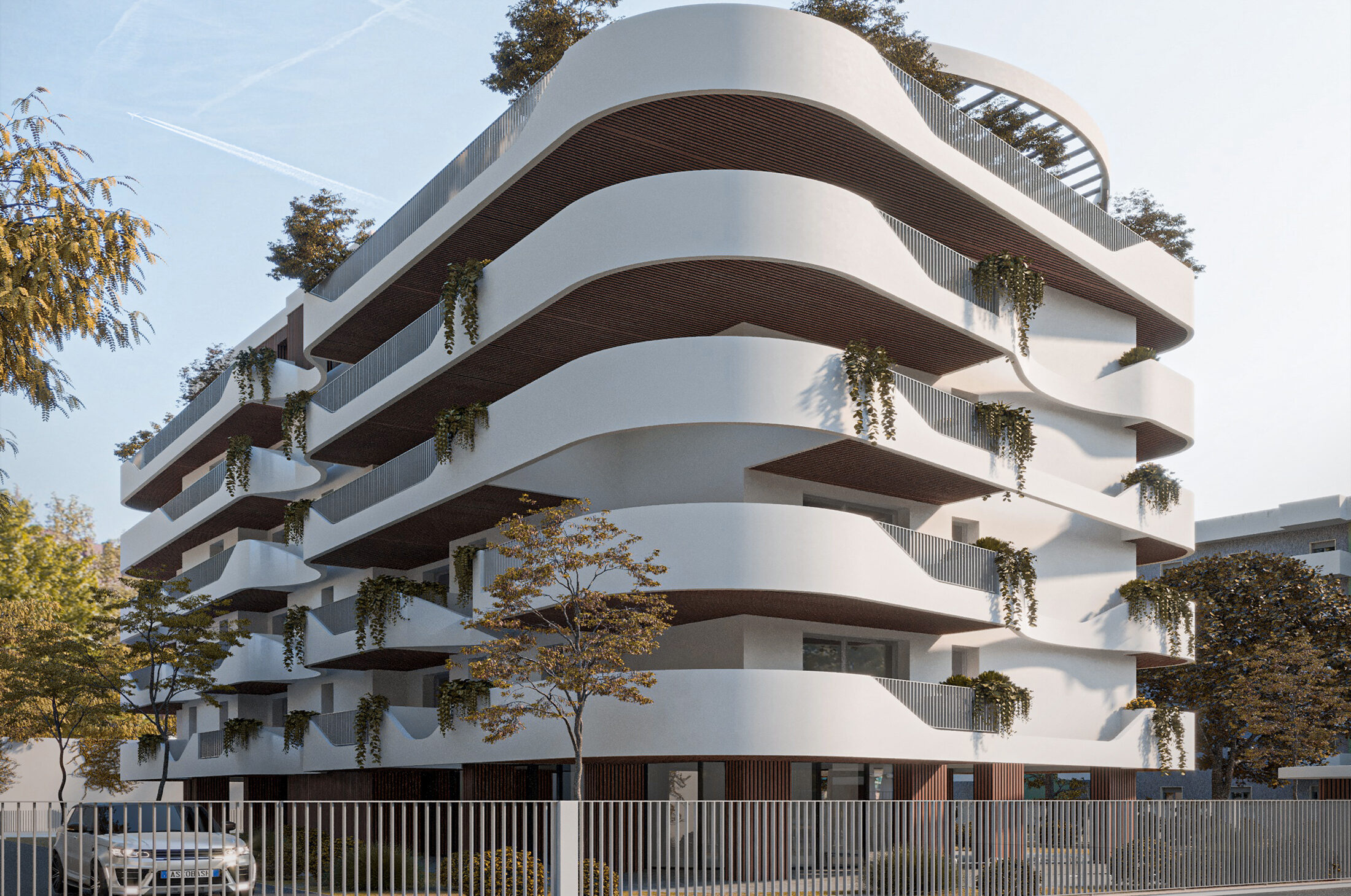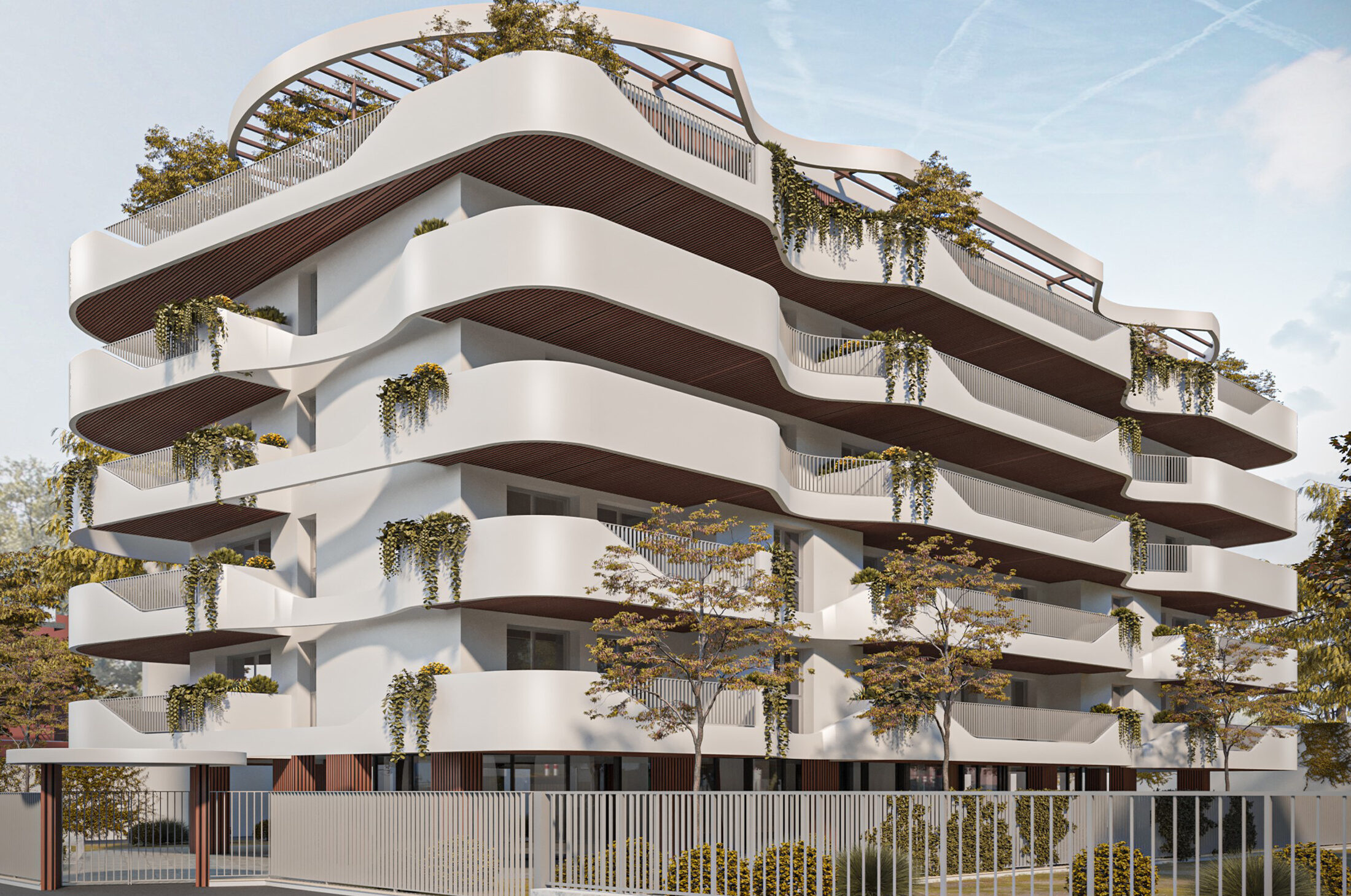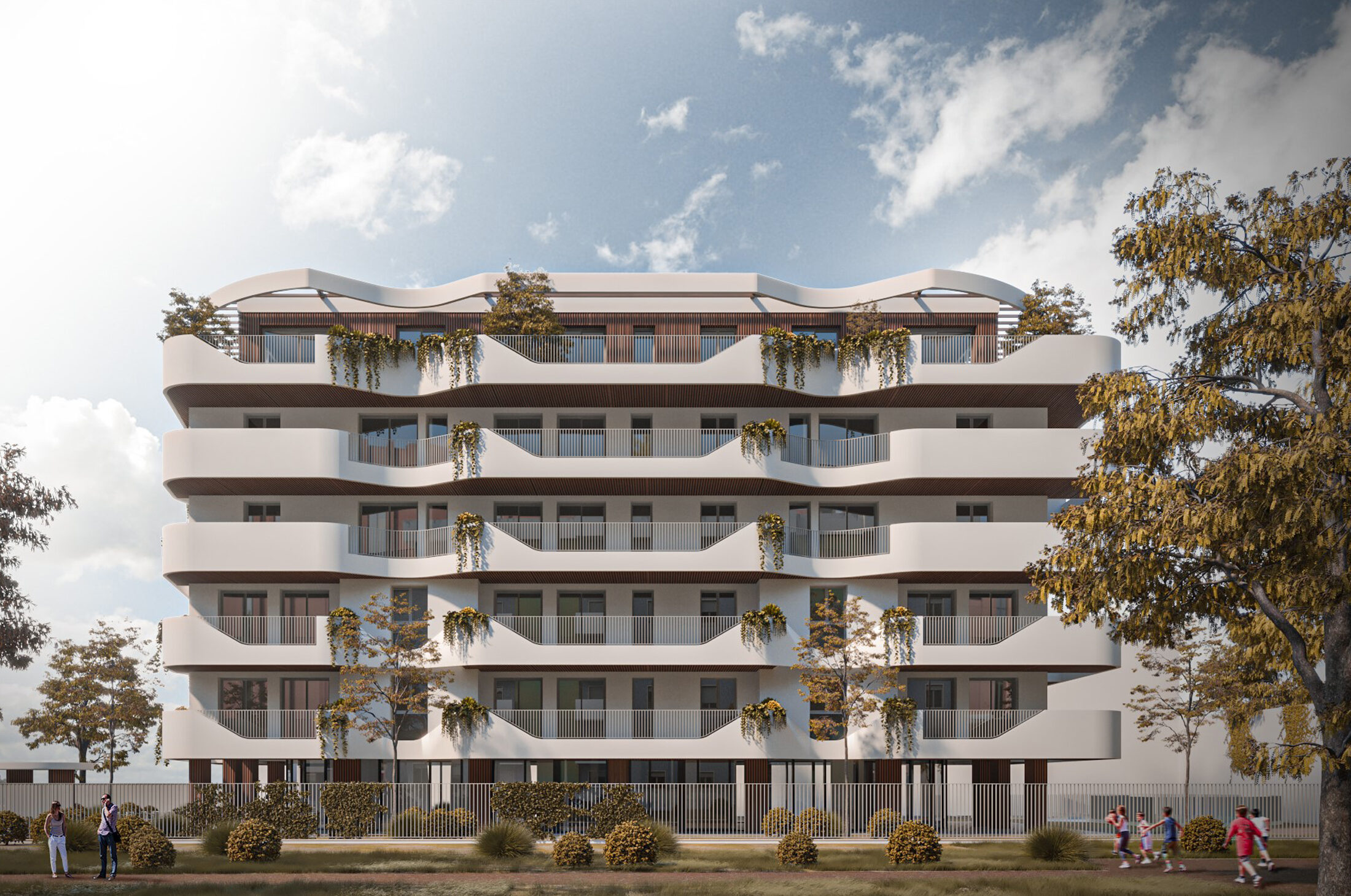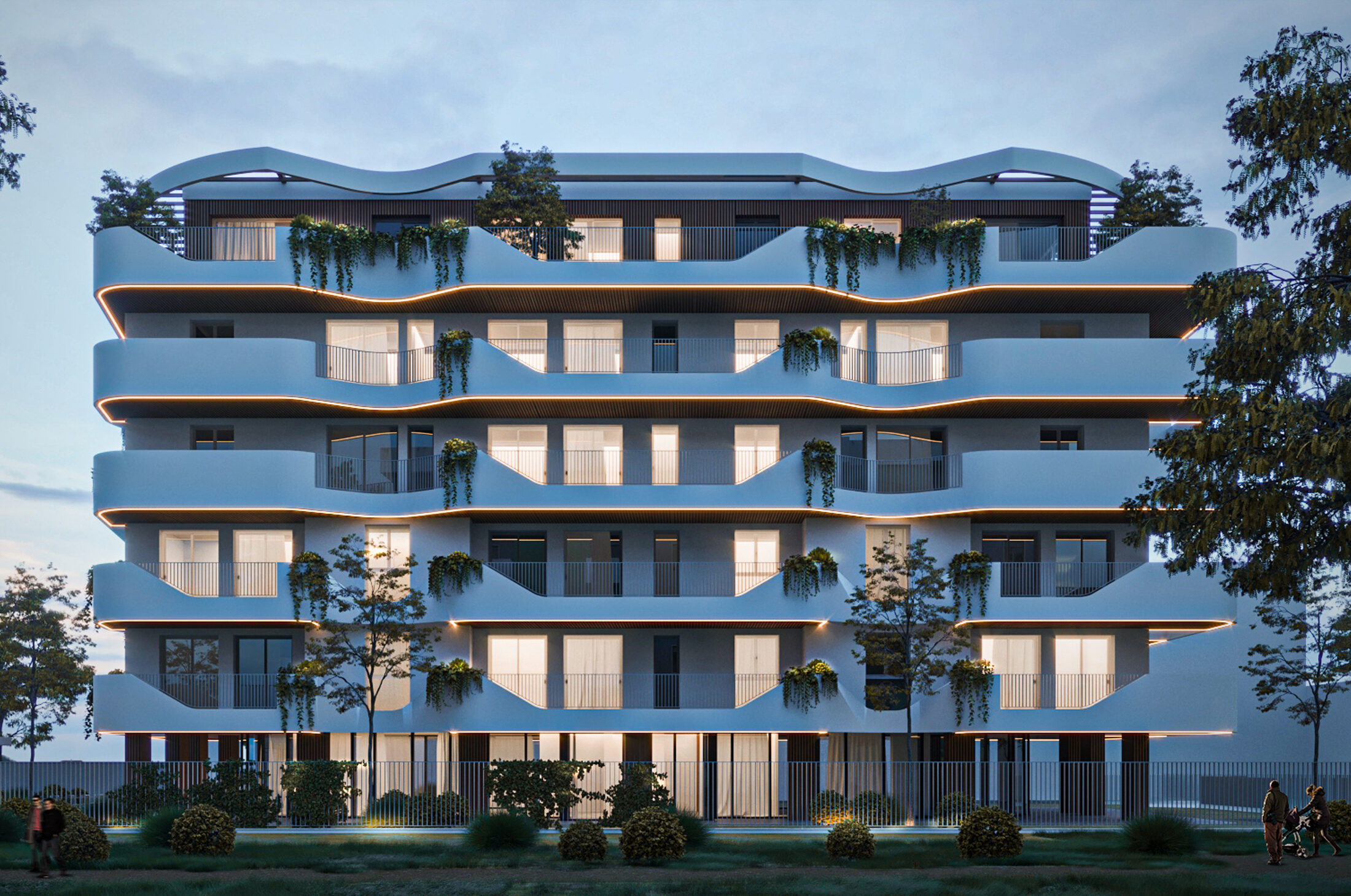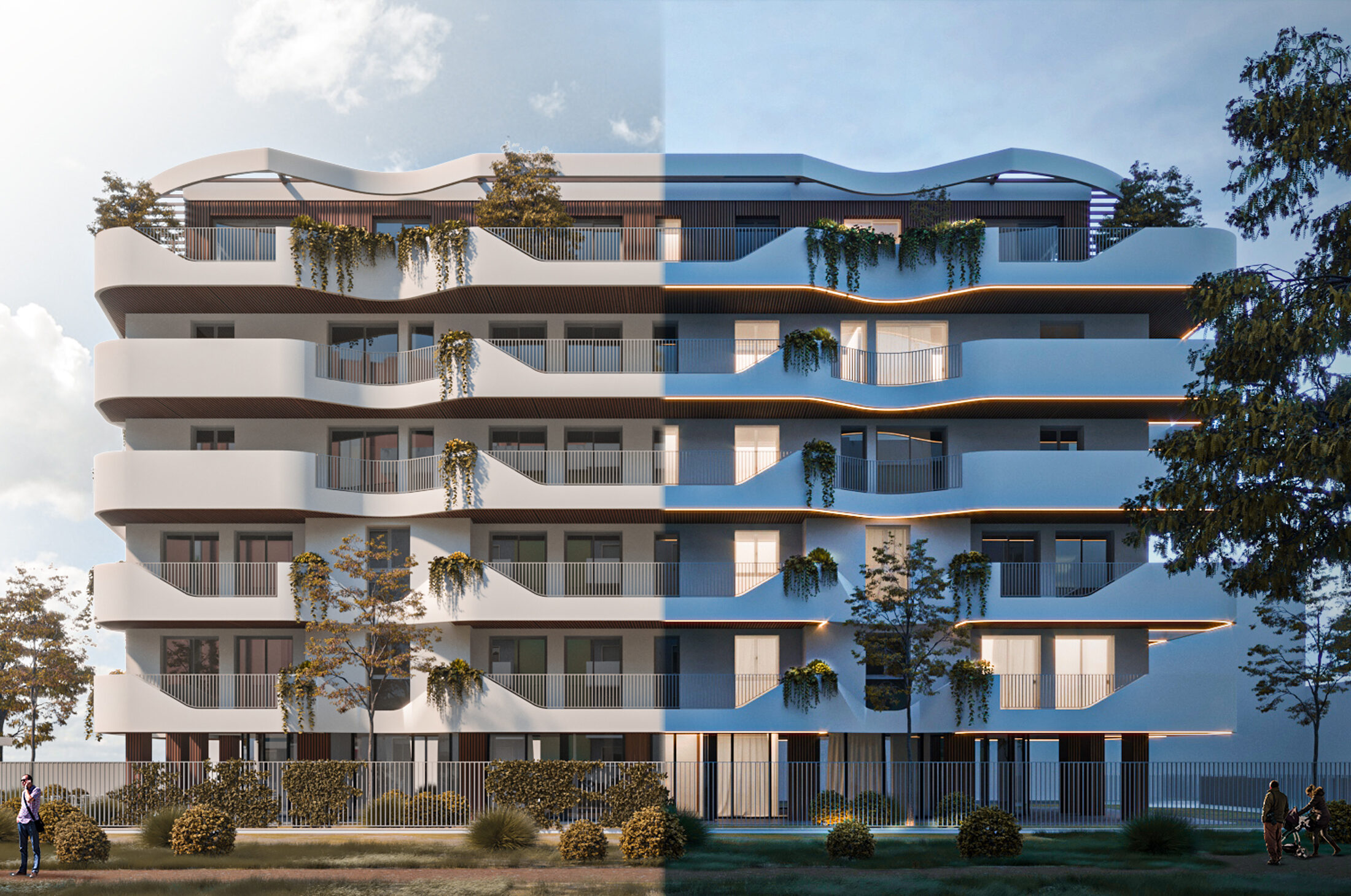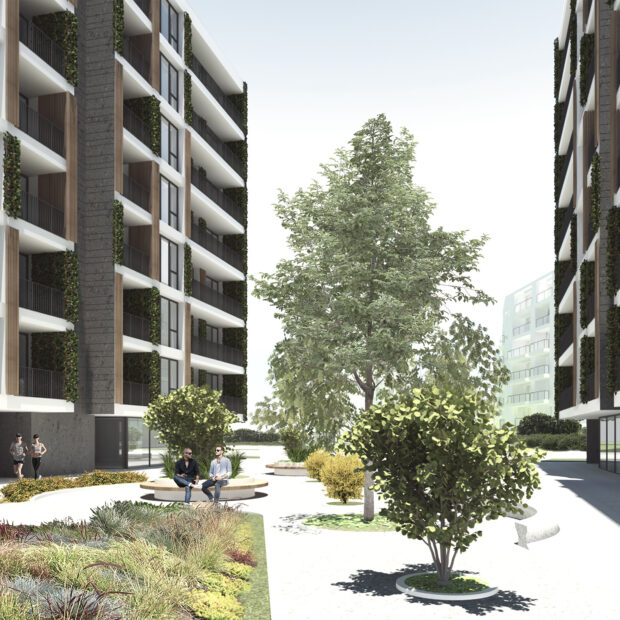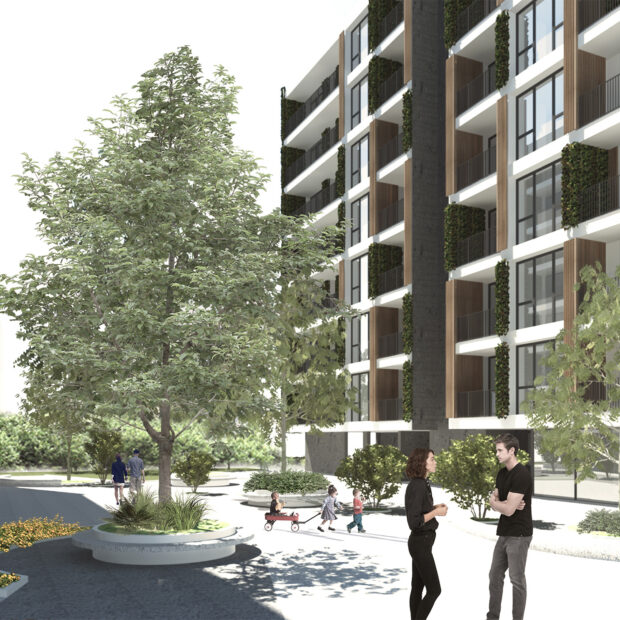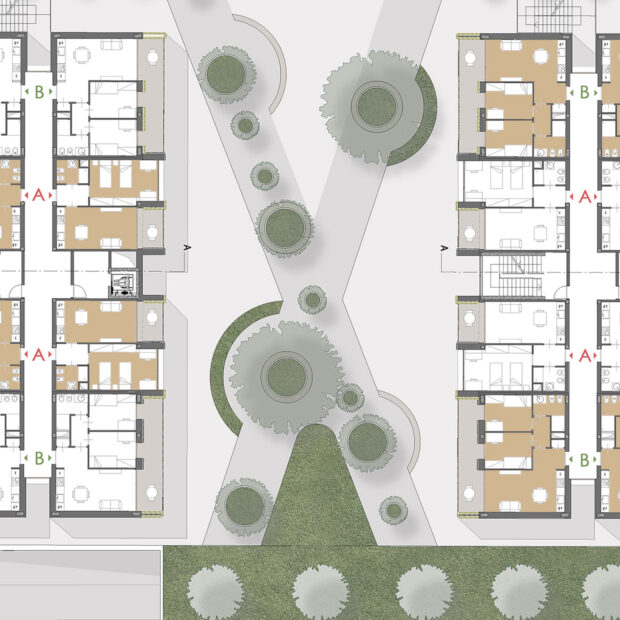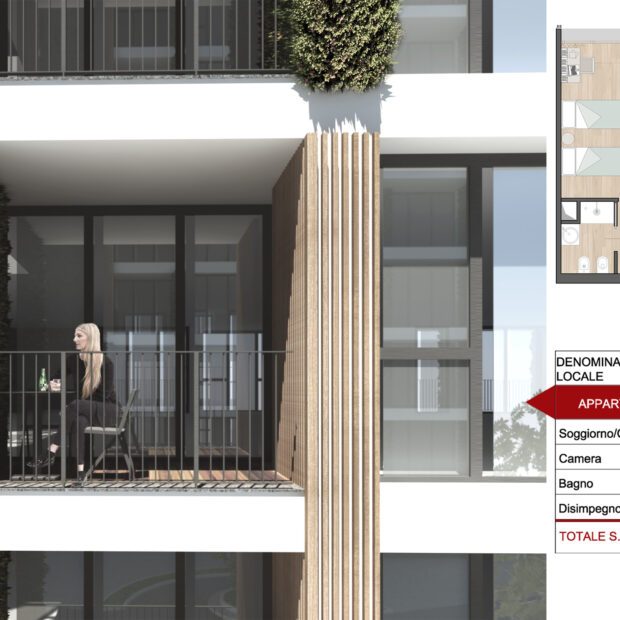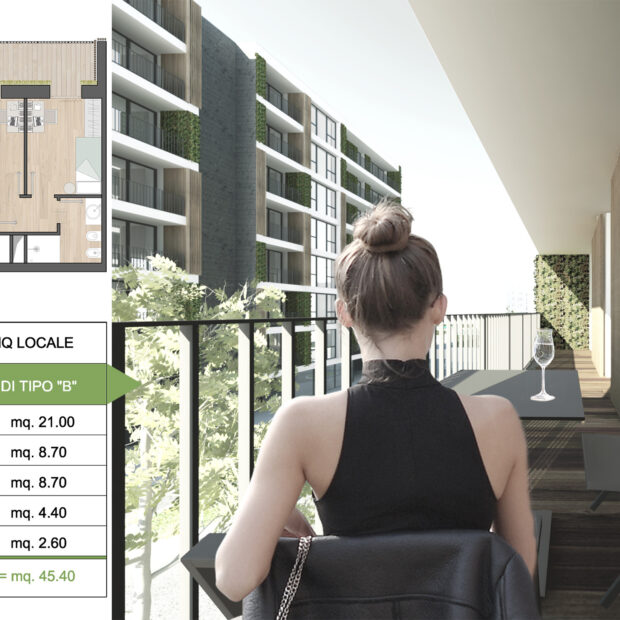Rigenerazione Urbana + Milano
The project area is included in the Urban Renewal Sector – ARU. The ARU are parts of cities undergoing transformation, consisting mainly of productive areas with adjoining tertiary parts linked to small production, interspersed with sporadic presence of residential buildings. The aggregation of these types generates an uneven and disaggregated building fabric, devoid of urban references, in which it is difficult to intervene with a “regulatory” project of reference for the surrounding spaces. In this specific case, the small border public park was considered as a reference element and “regulator”.
We intervene on a particularly frayed building fabric without particular architectural references, in an area of small size that does not allow to significantly affect the context. For this reason, we said, it was decided to enhance the existing public space through the “visual” expansion of the green space, creating a wide strip of private green as an expansion of the park itself, a minimal fence without solid masonry parts and an open ground floor with large full-height windows that expands and gives depth to the space itself.
At the planimetric level, as already mentioned, the building is located parallel to the major axis of the urban public garden, leaving the latter the role of catalyst of the whole intervention. In its vertical development the building reveals all its particularity. A volume made visually light by the sinuous lines of the balconies, which enhance the best perspective views on each floor and shape each house differently.
Each floor is designed according to its orientation and reserves maximum comfort for its inhabitants. The sinuous balconies, between transparencies and opaque parts offer important outdoor spaces. The pre-painted iron parapets interrupt the gentle curves of the concrete at various points to allow the user to appreciate the private green and the park. Each apartment in the scheme, therefore, has access to an outdoor terrace that generally borders the living room and which acts as a multiplier of space and comfort of the housing unit. These generous outdoor spaces, real outdoor living rooms, connect private areas in search of harmony between the urban world and the natural environment.Great attention has been paid to the continuous LED lighting of the facades, recessed in the false ceiling of the balconies, follows their own sinuous course, reinforcing the role of urban landmark, even at night, of the intervention.
PROJECT DATA
| CLIENT: | Private |
| TYPOLOGY: | residential |
| STATUS: | In progress |
| PLACE: | Milano |
| SUP: | — Mq |
| VOL: | — Mc |
| APPART. NUMB.: | 25 |
| PARKING PLACES: | 25 |
